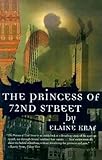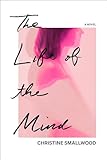At the beginning of 2020 I decided I would keep a record of all the books I read this year. I try to set really easy, attainable goals so that I can succeed and not fail, so this project was extremely pared down. I wasn’t going to worry about making precocious little observations about the books; I wasn’t going to worry about actually writing them down on a piece of paper so that my reading history and in turn soul could become a physical object in the world. I have a notebook from 2017 that contains one page of reactions to the 1985 movie Perfect starring Jamie Lee Curtis and John Travolta; I wasn’t going to make the same ambitious mistake again. I was just going to record every book I read in an iPhone note called “Books 2020.”
I stopped at Book #6. I didn’t stop because of the coronavirus, either—I just have no discipline for projects. I’ll never be a creative! But I had forgotten about some of these so I’m glad I at least managed this. First was A Radical Romance by Alison Light, which I bought from Saint George’s in Berlin, my favorite bookstore, because I don’t think it was published in the United States and I was in Berlin over Christmas. I got this because I read Life with Picasso at the end of last year and I thought maybe I would “get into” reading relationship memoirs, but so far that project has also stalled. Nevertheless, a lovely book. (Actually, both are lovely books, but we aren’t talking about what I read in 2019.) Next were Dept. of Speculation and Weather by Jenny Offill, for a review. Fourth was Loitering with Intent, by Muriel Spark, which I got at the wonderful Molasses bookstore in Bushwick. Fifth was G by John Berger, which I’d gotten at the great but severely touristically located Galignani in Paris two years before and not read. Sixth was Indelicacy by Amina Cain.
From here, who knows what happened? In January I went to a Gary Lutz reading at the McNally Jackson at South Street Seaport—beautiful bookstore!—and as I was waiting in line to buy The Complete Gary Lutz it was discovered that some of the books for sale were partially printed upside down. They wouldn’t sell me one of the messed-up books, though I wanted one and said, “No, no, it’s fine, I want one!” so I took home a normal version, from which I read stories occasionally over the course of several months. For reviews I read Death in Her Hands by Ottessa Moshfegh and Because Internet: Understanding the New Rules of Language by Gretchen McCulloch. At the end of February I went to Santo Domingo and wanted to read a Dominican writer who was not Junot Díaz or Julia Alvarez, so I found Hilma Contreras, and I read a couple of stories from her collection Between Two Silences. I couldn’t get the book in time for my trip, so I looked around some more and found that all the book reviews from the past were telling me to get The Feast of the Goat by Mario Vargas Llosa, which is about a woman who returns to Santo Domingo to visit her ailing father, a former member of Trujillo’s inner circle. Vargas Llosa is Peruvian, not Dominican, but he won the Nobel Prize so I thought it would be OK, not ideal but OK, for my purposes. I stopped halfway through because the translation had that translation-y flat clarity about it that ends up being deflating. While half-reading the book I hung out at the Mamey Librería Café, which is very Instagrammable.
I mention the bookstores because now it’s just not the same. I came back from Santo Domingo and didn’t leave Brooklyn for several months! As the pandemic was really getting under way I read Mark O’Connell’s Notes from an Apocalypse for a review, emailing briefly with my editor to establish that the whole situation probably had to be mentioned in some way, huh, and I paired it with Frank Kermode’s The Sense of an Ending, which is just spectacular. At this point I’d read my own book, Fake Accounts, at least once, maybe twice, and over the course of the year proceeded to read it several more times, finding progressively less disastrous errors. (It comes out in February. I’m really excited! And nervous.) Between April and July, I read every single article that was published on the theme “Will Europe reopen to American tourists?” and speculated endlessly about the arbitrary word choices in headlines that held the key to whether my boyfriend and I would be able to go to Berlin for the summer. This resulted in grave disappointment and really annoying logistical problems related to moving. I don’t remember much else about this period, books-wise, except that I read most of Shirley Hazzard’s books for a review of her collected short stories, and she’s fantastic so that was nice. (My favorite is The Bay of Noon.) Then I read most of Jenny Erpenbeck’s books, and she’s also fantastic. Go, Went, Gone—hello?! At some point I read Divorcing by Susan Taubes; Kim Jiyoung, Born 1982 by Cho Nam-joo; and part of On the Edge of Reason by Miroslav Krleža, which I didn’t finish even though it’s like 150 pages and awesome. Looking it up now I see that New Directions is reissuing it next summer, so I’ll get another chance. I think I found it because someone posted a picture of a paragraph on Instagram and instead of asking them what it was I googled a sentence.
This diary is already too long, so I won’t offer any reflections about reading and the pandemic. In July and August I moved in a very drawn-out way, which was not conducive to reading or anything else. Eventually I read Luster by Raven Leilani, and I reviewed Having and Being Had by Eula Biss. For a review that’s coming out soon, I read The Copenhagen Trilogy and the two other books by Tove Ditlevsen that I could find in English, the short story collection Complete Freedom and the novel The Faces; I think she’s great, and The Faces might be my sentimental favorite book of the year. After that, or maybe before, I read Patricia Lockwood’s novel, No One Is Talking About This, which is out in February, and What Are You Going Through by Sigrid Nunez. I also read Diary of a Bad Year by J.M. Coetzee, which might be my official favorite book of the year; Out of Sheer Rage by Geoff Dyer, which is hilarious; and The Princess of 72nd Street by Elaine Kraf, which is, again, great and moving. (I found it because someone tweeted about it in response to a thread about unhinged narrators.) Because my novel is also about conspiracy theories and partially set in Berlin, I read Red Pill by Hari Kunzru, which I bought from one of my new local bookstores, the cooperatively owned Buffalo Street Books. For too long I’ve been reading Mortals by Norman Rush; I only have 200 pages left, and although I will finish it because I feel a lifelong duty to him after reading Mating—and because it’s good—the protagonist is still being held captive in the desert with the man who may be sleeping with his wife. Instead of finishing that, I just started Possession by A.S. Byatt, which I got at the Friends of the Library Book Sale in Ithaca (!!! wow), and I accidentally paired it with another novel about a low-ranking academic, The Life of the Mind by Christine Smallwood, which is out in March. Soon I think it will be time for Herzog.
More from A Year in Reading 2020
Don’t miss: A Year in Reading 2019, 2018, 2017, 2016, 2015, 2014, 2013, 2012, 2011, 2010, 2009, 2008, 2007, 2006, 2005



















